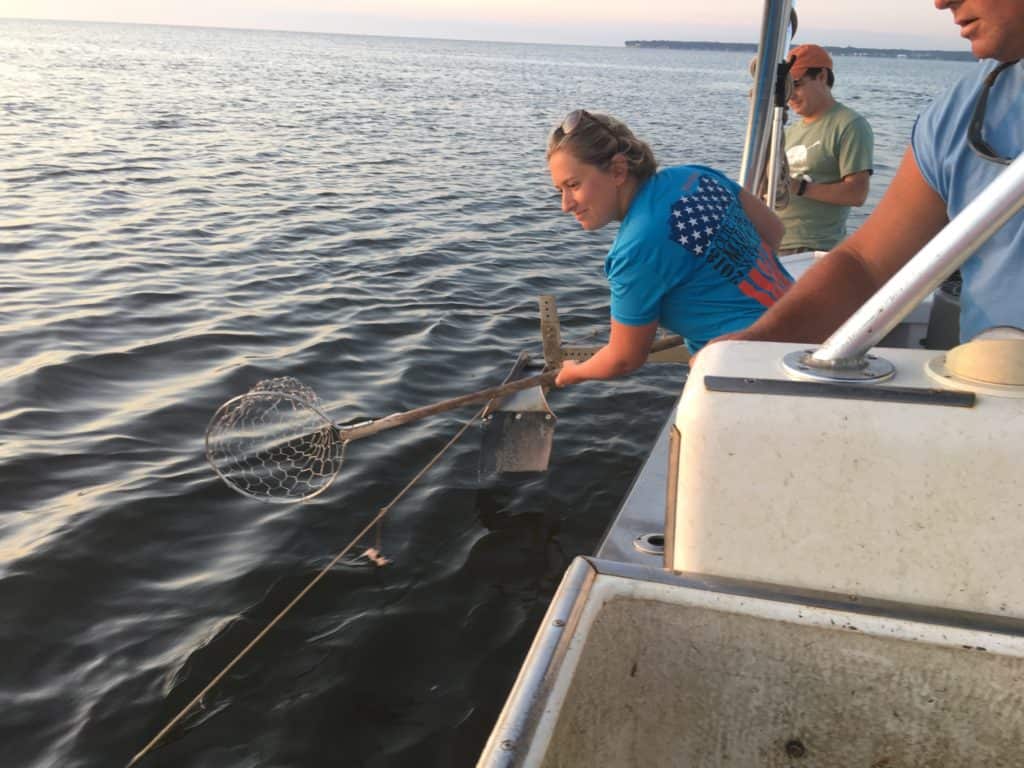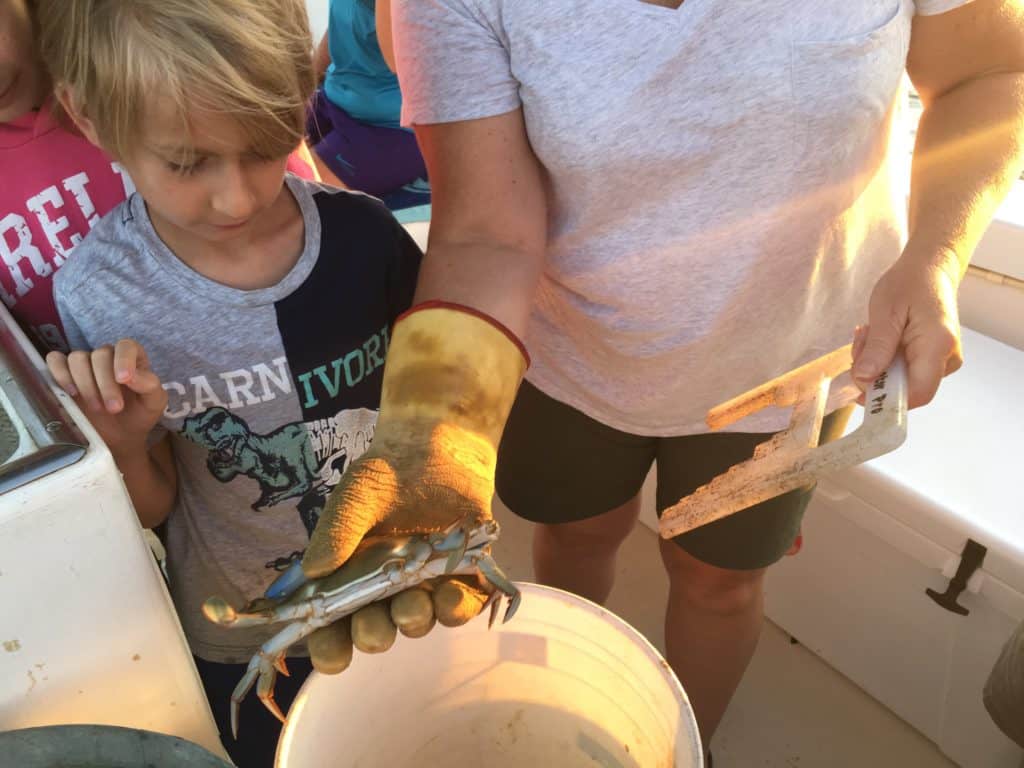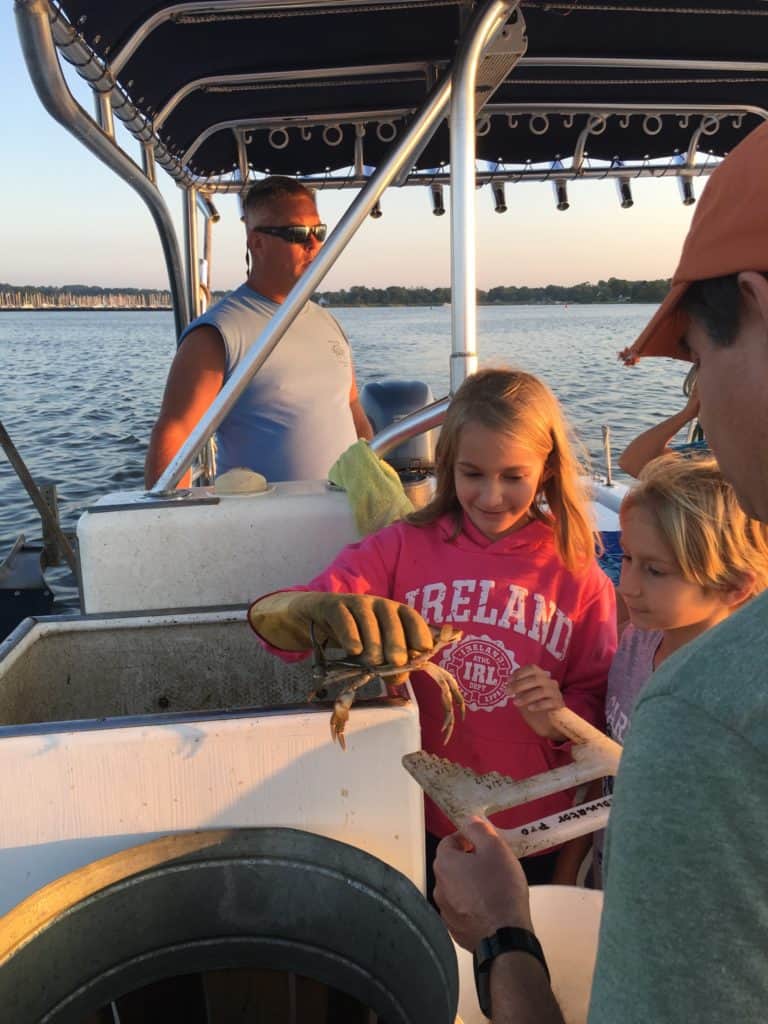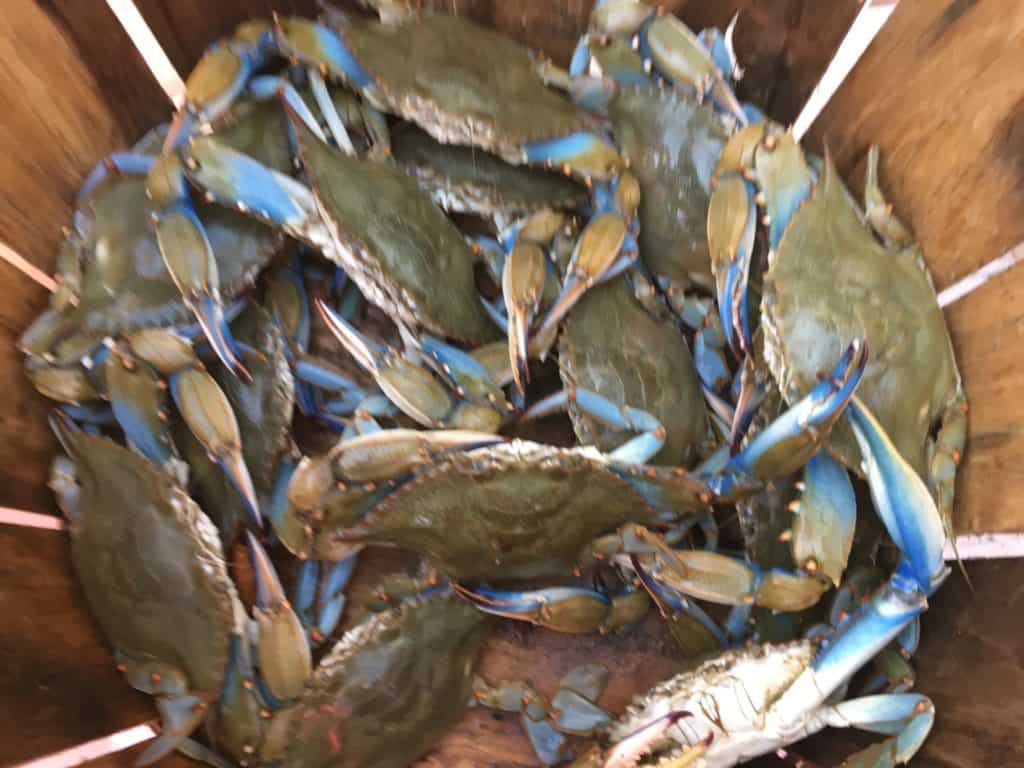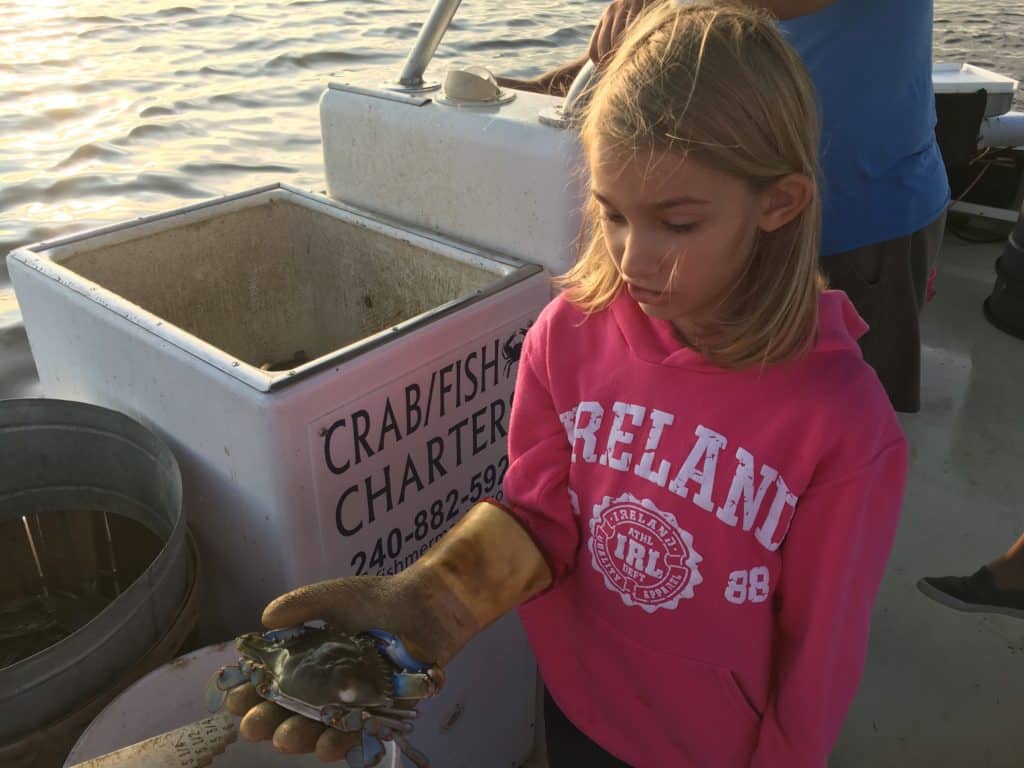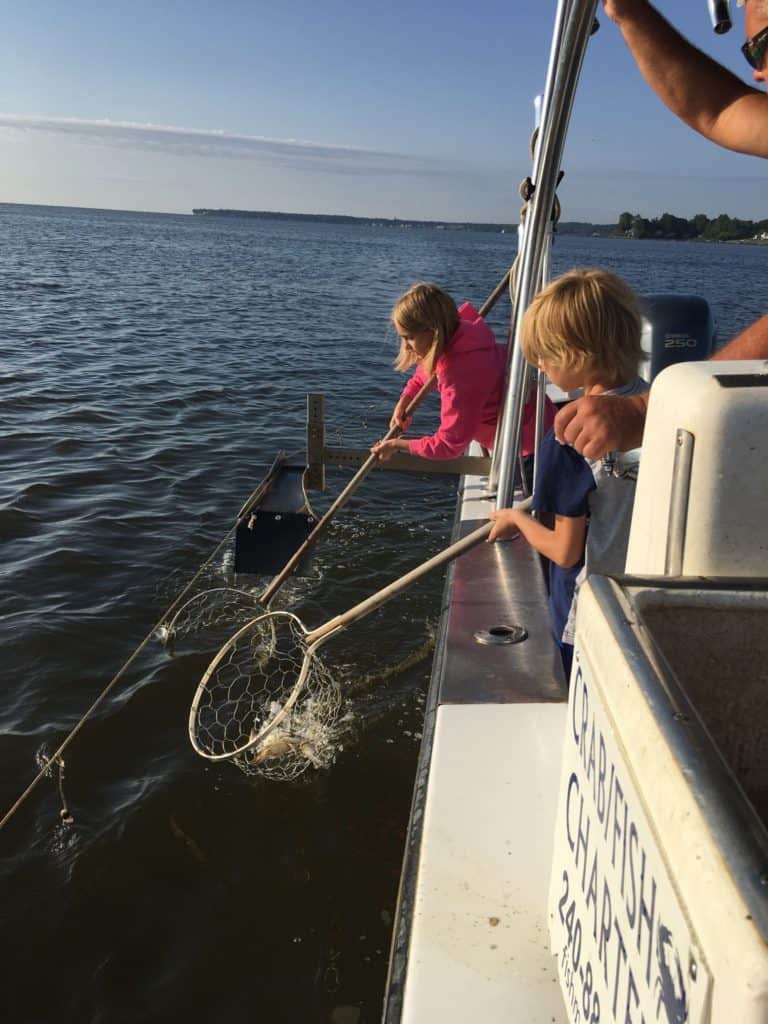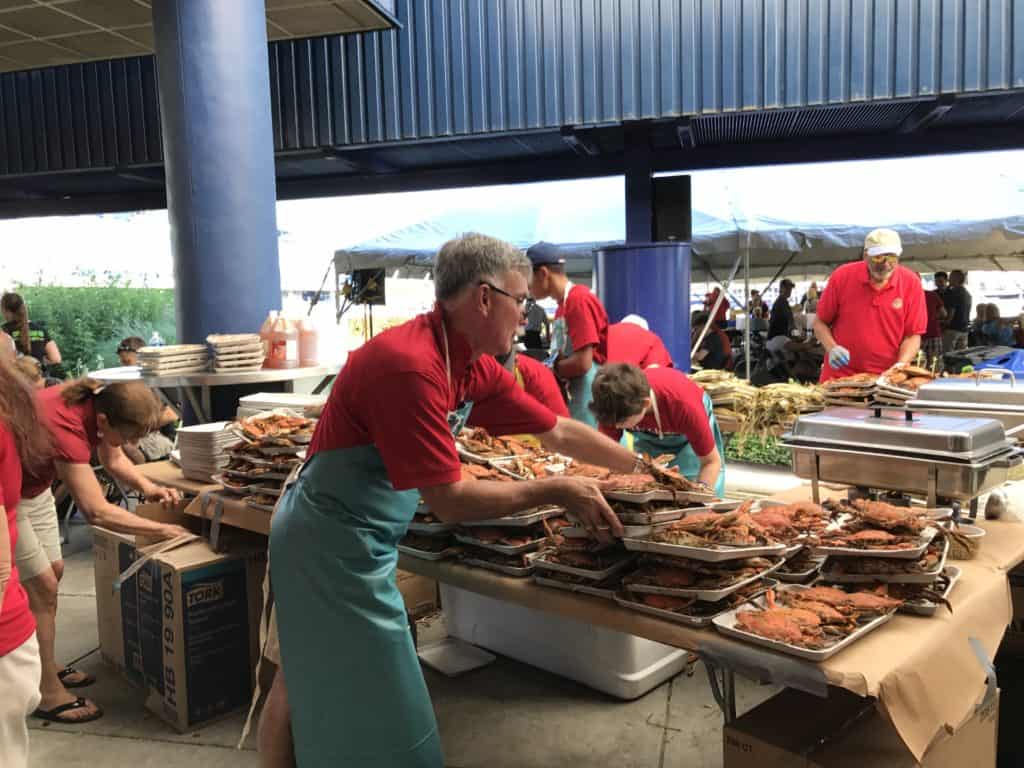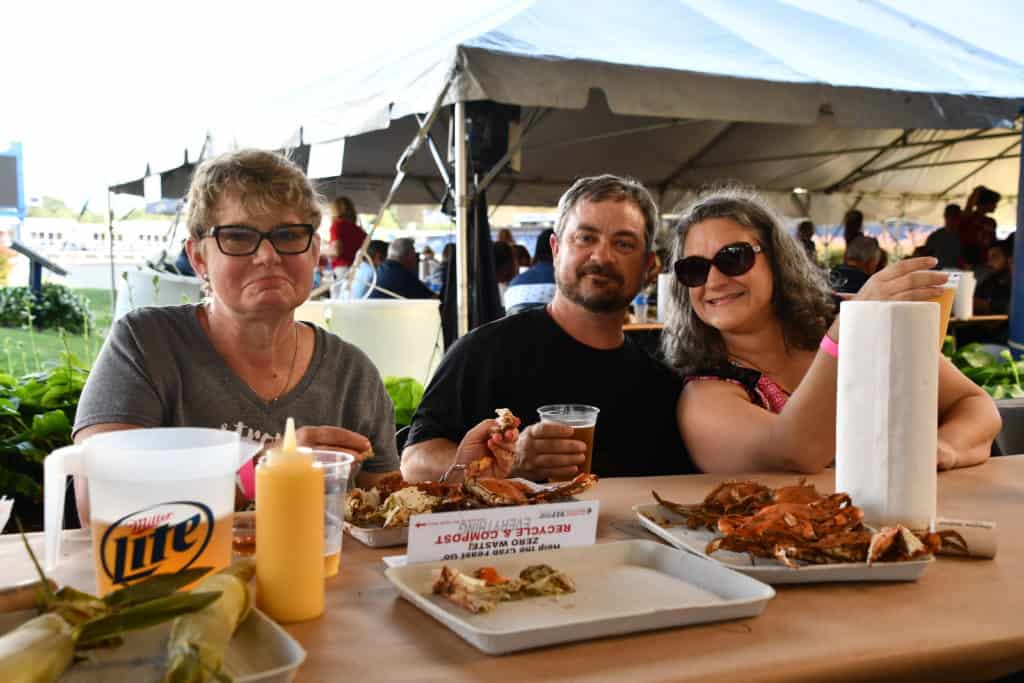Get Cracking!
Embrace crab feasts at home (caught by hand or by the pros)
There may be nothing more iconic than a crab feast on a hot Maryland summer day. Due to the coronavirus pandemic, however, that feast is more likely taking place in your own backyard rather than a seafood restaurant.
Those who make their living bringing crabs to hungry customers have noticed a surge in demand, after a slow beginning to the season because of restaurant closures due to COVID-19.
Waterman Ryan Mould of Shady Side says though wholesale numbers dipped, the season “has been very good for retail sales. Our retail business has doubled each month since May.”
The public demand is notable. “People, especially in the Annapolis area, are purchasing crabs from farmers’ markets and having crab feasts at home versus going to eat in a crab house. In South County, where our farm stand is, there is more demand as well. At the farmers’ markets, we have a line at times that starts an hour before the market even opens,” says Mould.
If you’re new to cracking crabs at home, we are here to help.
Crabs To-Go
Finding live or steamed crabs for purchase around Chesapeake Country is not a difficult task. You can find crabs in seafood markets, restaurants, and roadside trucks all over the region, and support your local watermen or small seafood businesses at the same time.
It’s important to choose wisely when selecting your crab dinner. If you are buying live crabs, look for lively activity. Until you are ready to cook, keep them in a cool, damp dark place.
If you are buying them already cooked, do a sniff test. Steamed crabs should be firm-fleshed and sweet-smelling. If you want to know whether your crabs are true-blue from the Atlantic, simply ask when ordering. Smaller crabs are most likely to be locally caught, but the extra-large to jumbo sizes are often trucked in from the Gulf in early summer.
You can enjoy crabs this weekend by heading to the Annapolis Rotary Club’s Crab Feast To-Go event. A major social event that attracts thousands, the Crab Feast is normally held under tents at Navy-Marine Corps Memorial Stadium. Bay Weekly is a proud media sponsor year in and year out.
Due to the coronavirus, this year’s feast is take-out only. You can place crab orders online, then pick up your dinner in a drive-thru line to take home. Choose from a bushel, a half bushel, or one or two dozen crabs, plus corn on the cob. Crabs will be steamed onsite at the stadium and packaged for travel. Rotarians and volunteers (wearing protective equipment) will direct traffic and provide customers with their orders as they drive through designated lanes in the parking lot.
All crab feast proceeds go to local charities—last year’s feast raised $45,000 and was awarded in the form of grants to 21 organizations. Pickups will be between 4:30-7pm. Find more information at: http://www.annapolisrotary.org/crabfeast.
Cook What You Catch
For the freshest possible crabs, of course, you can catch them yourself—following the lead of plenty of folks in Bay country who have picked up crabbing during the pandemic.
Local crabbing supply shops are having trouble keeping up with demand as recreational crabbers flock to the water.
“I can’t keep a trotline or pull traps (topless traps) in supply for more than a day or so,” reports Daniel Mallonee owner of Bay Country Crabbing Supply in Edgewater. “I’ve got a two- to three-week backorder on our traps, which we build ourselves.”
Mallonee says he has seen a surge in people going crabbing, both from shore and onboard a boat. “I think everyone’s trying to do what they can to get out of the house and also to do for themselves as much as possible.”
With crabbing, he says it’s all about trial and error. “Crabs are out there but there are a lot of small ones out there right now, because of that dead zone out in the Bay. If you have the means to catch your own, go do that.”
But if you’ve never tried to harvest your own dinner, you may need some pointers.
You don’t need fancy equipment or permits. Maryland allows a recreational crabber up to two dozen crabs, caught by net or handline, without a license. So, you won’t need much more than chicken necks for bait and a few quiet hours on the Bay or its rivers.
Cotton twine works well for your hand line, plus an inexpensive crabbing net, a ruler to measure your crabs and a basket to hold your catch. Consider tongs or thick gloves for protection against pinchers. Tie a chicken neck to a 15-foot line of string, tie the other to the pier or other structure, then toss it into the water.
When your line straightens out, you’ve got a crab. Gently pull it towards you, and if you’re careful, the crab will hold on until it nears the surface of the water. Be ready with your net.
Position the net in the water a foot or two down below where you believe the crab will appear. (A crab will always flee downward.) Pull the crab up until you can see it and scoop quickly from below.
Measure your crab before he goes into the basket—at least five inches tip to tip. All females, distinguished by their triangle-shaped apron on the underside, must be returned to the water.
Time to Feast
Now that you’ve caught your crabs (or bought them), it’s time to prepare for a feast. A good estimate for how many you will need is generally six large crabs per person (though some marathon crab-eaters can put away many more).
Marylanders steam crabs, never boil. You’ll need a large pot with a separate steamer section. Tongs or gloves will keep you from getting pinched. Soak the crabs in ice water for about five minutes so they can be handled easily and stacked compactly in your pot.
Pour a beer plus a half-cup of vinegar into your pot, and steam at least 20 minutes—but not more than 30 minutes—until their shells turn bright red and the air fragrant.
Use newspapers to cover your table—we suggest old Bay Weeklies. (If you need extra, send us a message through social media or email—seriously!) Dump the crabs onto the paper, mist them with water or beer and sprinkle generously with your favorite crab seasoning. Provide your guests with extra seasoning, small knives, and mallets for opening and picking the crabs. Some swear by melted butter and vinegar for dipping, while purists reject the notion. Add a roll of paper towels for hand-wiping.
We won’t get into the long debate over the best way to get to the meat. Mallonee swears by the knife method he learned from his great-grandmother, a professional crab picker. “I can clean a dozen in five minutes,” he boasts.
What more do you need? Maybe good crusty bread, corn on the cob and watermelon.
Tag us in your crab feast photos—complete with Bay Weekly crab paper—using #BayWeeklyGetsCrabby.





